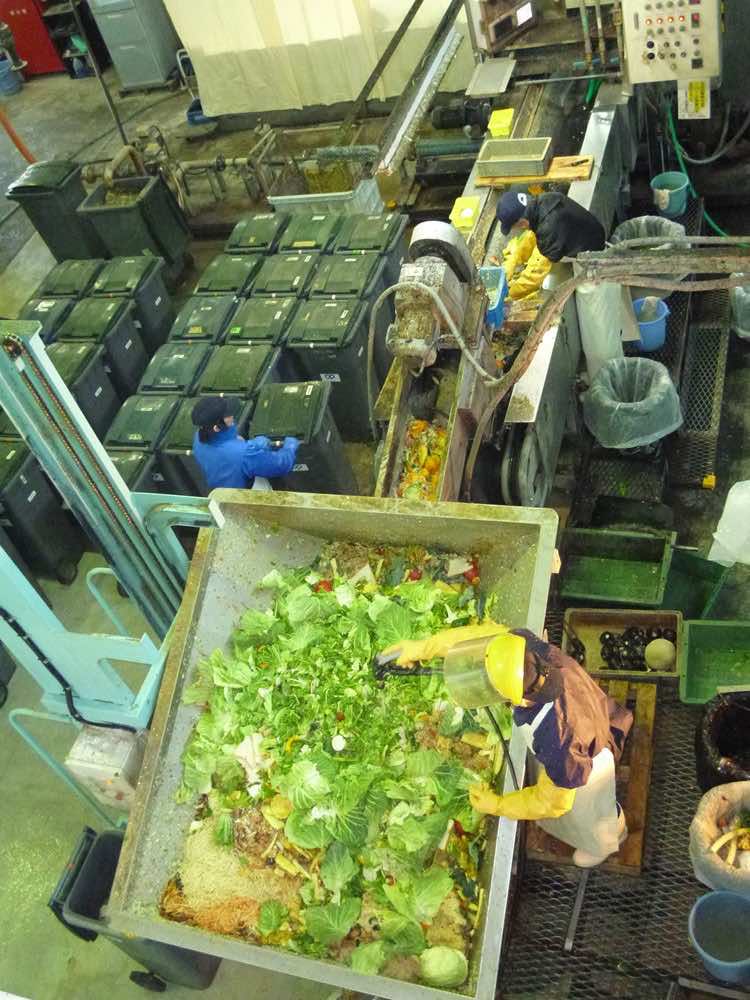At the Japan Food Ecology Center, an innovative solution to one of the country’s most pressing problems—food waste—is transforming the way Japan approaches sustainability.
Through fermentation, this cutting-edge facility is turning discarded food into eco-friendly livestock feed, cutting greenhouse gas emissions, and creating a model for a circular economy. The mastermind behind this revolution is Koichi Takahashi, a man whose lifelong vision of environmental stewardship is helping Japan move closer to its ambitious carbon neutrality goals.
RELEVANT SUSTAINABLE GOALS



A Vision Born from Necessity
For Koichi Takahashi, the founder of Japan Food Ecology Center, the dream of environmental preservation was not just a fleeting childhood ambition—it became his life’s work. Recognizing the environmental and economic challenges posed by Japan’s reliance on food imports and the high costs of food waste disposal, Takahashi turned to pig farming as a pivotal area for change. His mission? To reduce food waste and emissions while simultaneously creating value from what would otherwise be discarded.
In Japan, a staggering 28.4 million tonnes of edible food are thrown away every year. This waste doesn’t just impact the environment—it also costs millions of yen in incineration fees and contributes significantly to greenhouse gas emissions. Takahashi’s solution was as simple as it was ingenious: why not convert food waste into nutritious, sustainable feed for livestock?
The Power of Fermentation: Turning Waste into Wealth
At the core of Takahashi’s operation is an ancient process with modern applications: fermentation. The same technique that has long been used to produce soy sauce and miso in Japan is now being used to turn food waste into what Takahashi calls “ecofeed”—a nutrient-rich, lactic acid-fermented feed for pigs.
The fermentation process offers several key benefits. It optimizes the nutritional content of the food waste, prolongs its shelf life, and, crucially, slashes greenhouse gas emissions by 70% compared to traditional feed production methods. As Japan pushes to meet its emission reduction goals and achieve carbon neutrality, innovations like ecofeed offer a way to align environmental goals with economic sustainability.
A Model for the Future: Zero-Waste, Zero Odor
At the Japan Food Ecology Center, innovation goes beyond fermentation. The facility, which processes 40 tonnes of food waste daily, has surprised visitors not only with its scale but also with its cleanliness. Unlike traditional waste treatment facilities, the center is virtually odor-free, a testament to its advanced processing techniques.
Every day, the center receives a wide variety of discarded foods from supermarkets and food manufacturers across Japan. Whey, a byproduct of butter and cheese production, along with scraps from gyoza and sushi factories, make up just some of the daily shipments. While manufacturers supplying Japan’s more than 55,000 convenience stores generate a significant amount of food waste due to overproduction, the Food Ecology Center ensures that none of it goes to waste.

Each batch of ecofeed is carefully crafted with attention to nutritional balance. Contamination is meticulously prevented through metal detection and manual inspection, ensuring that only the highest-quality feed reaches farmers.
The Japan Food Ecology Center processes over 35,000 tonnes of food waste annually, turning what was once a costly environmental problem into a profitable, eco-friendly solution. The center’s success challenges the traditional notion that environmental initiatives are financially unfeasible. Instead, it shows that sustainability can drive profit, innovation, and meaningful change.
The Rise of Eco-Pork: A New Standard in Livestock Farming
The impact of ecofeed isn’t just environmental—it’s transforming the livestock industry as well. Farmers across Japan are discovering the advantages of ecofeed, from lower costs to higher quality products. Dan Kawakami of Azumino Eco Farm notes that pigs raised on ecofeed produce pork with superior taste and texture, setting their products apart in the marketplace. The demand for this so-called “eco-pork” is growing rapidly, with annual sales exceeding 350 million yen, thanks to its reputation for being both delicious and environmentally friendly.
Ecofeed is more than just a sustainable option for farmers; it’s a cost-effective one, too. Farmers can customize their feed formulas to meet the specific needs of their livestock, improving the quality of their products while keeping costs down. It’s a win-win that is helping to reshape Japan’s agricultural landscape.

Turning Methane Into Power: The Biogas Revolution
Takahashi’s vision doesn’t stop with ecofeed. In another forward-thinking move, the Japan Food Ecology Center has ventured into biogas production, turning methane generated from food waste into electricity. The plant’s biogas system generates 528 kW of electricity daily—enough to power 1,000 households—and sells the energy back to the grid, making the facility not only a leader in sustainability but also a profitable enterprise.
The byproducts of the biogas process are not wasted either. The nutrient-rich slurry left over from methane production is converted into agricultural fertilizer, further contributing to a zero-waste, circular economy model.
As Japan grapples with the twin challenges of reducing greenhouse gas emissions and managing vast amounts of food waste, the Japan Food Ecology Center offers a powerful example of what’s possible when innovative thinking meets environmental commitment. Takahashi’s work is a testament to the idea that, with the right technology and vision, we can turn waste into wealth and build a more sustainable future.
Lead image courtesy of Rachel Nuwer
You may also be interested in :
From Bali To Yogyakarta: Transforming Plastic Waste to Fuel




